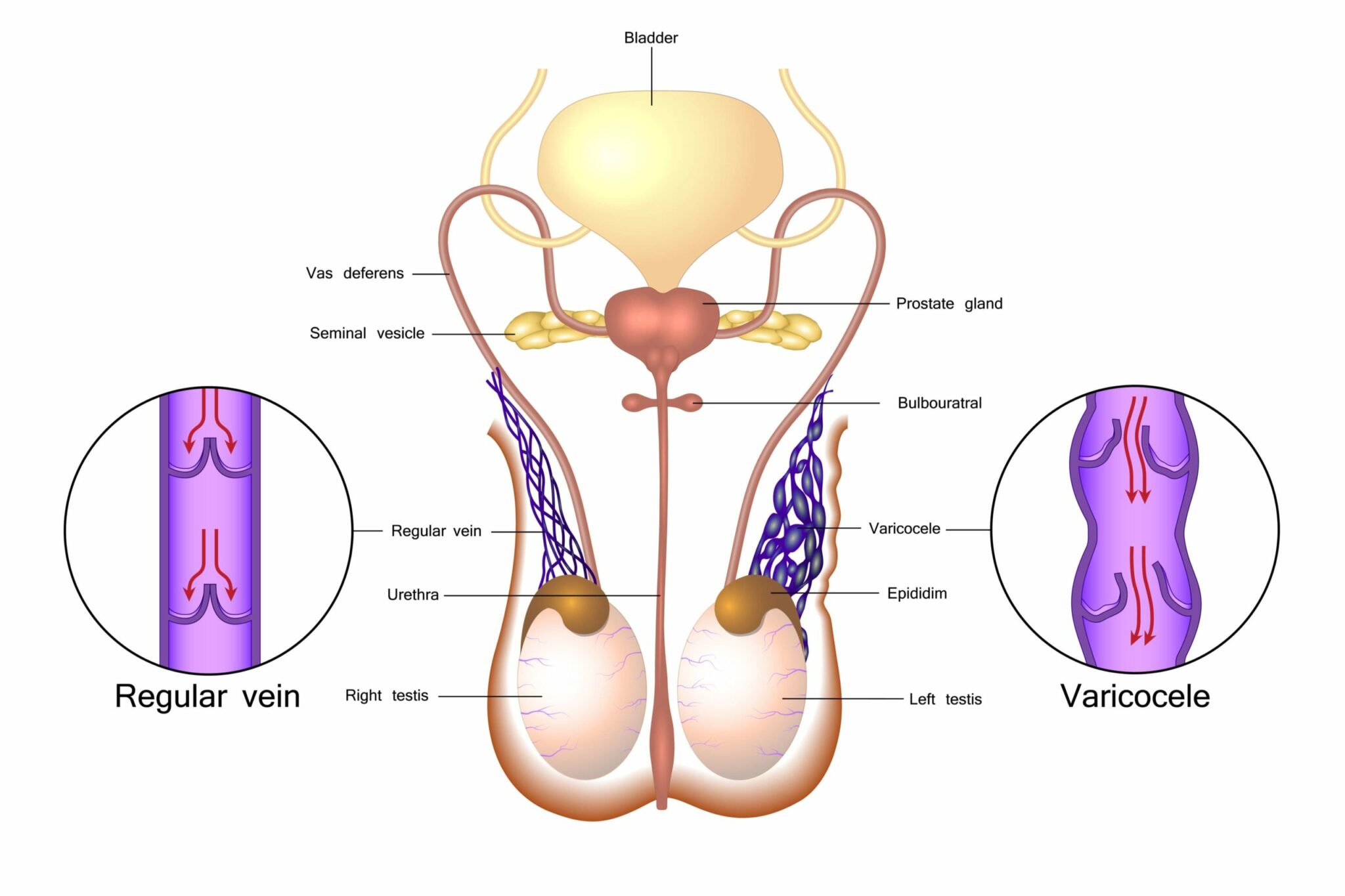What are Varicoceles?


Varicoceles occur when the veins within the scrotum become enlarged. They usually develop around the time of puberty and are fairly common, affecting 10 to 15% of males. Usually they are asymptomatic and will not require any treatment. However, they can grow over time causing pain, testicle shrinkage and/or infertility. Up to 40% of men who struggle to conceive will discover they have varicoceles. They are even more common in men who have secondary infertility, i.e. those who experience difficulty in conceiving, having already fathered a child (or children). The prevalence in these cases is thought to be as high as 80%.
Why do varicoceles form?
Whilst the underlying mechanism is unclear, it is thought that varicoceles form when the valves within the veins hinder the flow of blood, causing it to pool, and the veins to swell. They more frequently occur on the left hand side, where the veins are under greater pressure to pump the blood back to the heart.
How are varicoceles diagnosed and treated?
Varicoceles are diagnosed via physical examination or ultrasound. When palpable, they are said to resemble a ‘bag of worms’. Approximately 20% of men who have varicoceles will struggle to conceive and, upon further testing, most of these men will also have abnormal semen.
Not all cases of varicoceles will require treatment and many men remain asymptomatic throughout life. However, in some cases the condition has been found to be progressive over time and as such, doctors often treat those with a palpable mass or a testicular size discrepancy of more than 20%, with a view to reducing the risk of future fertility problems.
The preferred treatment approach is to perform a microscopic inguinal or subinguinal varicocelectomy. During this procedure, the surgeon will access the area via the groin and ligate the collateral veins, redirecting blood flow, but sparing the localised arteries and lymphatics. It has a low recurrence rate and seems to correlate well with an improvement in semen quality.
Why is it important to check for varicoceles?
It is concerning that a significant proportion of couples undergo Assisted Reproductive Technologies/Techniques (ART), which is financially, emotionally and physically draining, before checking for the presence of varicoceles. In fact, in one review 70% of women who underwent ART had no abnormality in their reproductive system and the only clinical sign of infertility between the couple was varicoceles in the male partner. ART was never going to be successful in these cases.
Varicoceles are common, but the good news is that their treatment is relatively straightforward and has a high success rate.
Nabta is reshaping women’s healthcare. We support women with their personal health journeys, from everyday wellbeing to the uniquely female experiences of fertility, pregnancy, and menopause.
Get in touch if you have any questions about this article or any aspect of women’s health. We’re here for you.
Sources:
- Balasubramanian, A, et al. “An Infertile Couple’s Long and Expensive Path to Varicocele Repair.” Urology, vol. 124, Feb. 2019, pp. 131–135., doi:10.1016/j.urology.2018.10.021.
- Choi, W S, and S W Kim. “Current Issues in Varicocele Management: a Review.” The World Journal of Men’s Health, vol. 31, no. 1, Apr. 2013, pp. 12–20., doi:10.5534/wjmh.2013.31.1.12.
- “What Are Varicoceles?” Urology Care Foundation, www.urologyhealth.org/urologic-conditions/varicoceles.











































